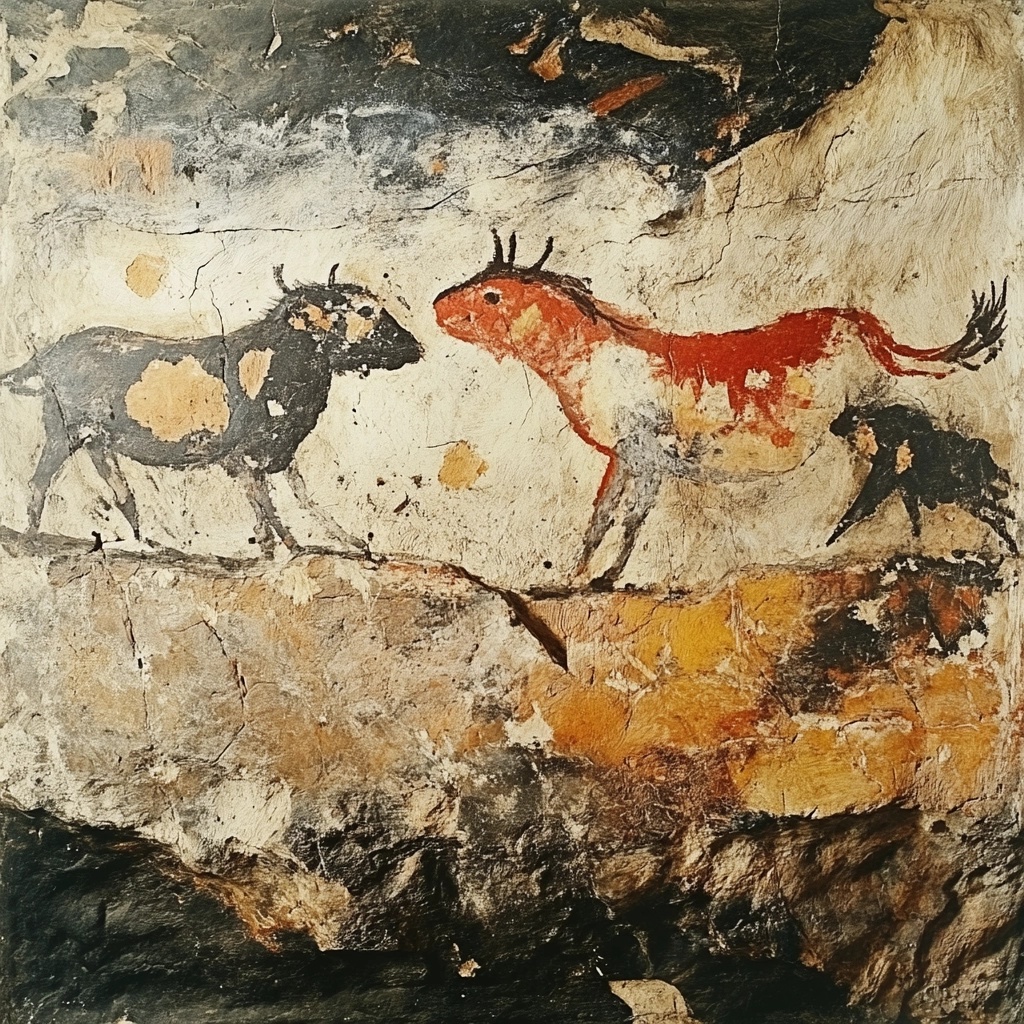Does Human Creativity Have A Place in the Age of AI?
 Cameron Johnson
Cameron Johnson
Sure, AI has created a 20% reduction in writing freelancing services. But, that’s no big deal… right?
In Mona Lisa Smile (2003), Julia Roberts’ character stands in front of a class and talks about cave paintings—the earliest form of human art. She points out that these crude, simple drawings were more than just marks on a wall. They were a way for early humans to say, I was here. This is my life. These paintings show that humans have always had an undeniable need to tell their stories, warts and all. They weren’t about perfection; they were about connection. That fire—the one that drives us to create and communicate—is what makes us human.
Fast forward to the age of AI. Sure, machines can produce beautiful images or perfectly structured prose in seconds, but can they replicate that fire? Creativity isn’t just about the final product; it’s about the raw, messy humanity behind it. Those cave paintings still resonate because they’re imperfect and deeply personal. They remind us that creativity is about leaving a mark, sharing a part of ourselves, and connecting with others. AI, for all its technical brilliance, doesn’t have a story to tell. It doesn’t create because it feels or because it needs to be seen. It creates because we tell it to.
That’s the key difference. As long as humans dictate the meaning, there’s no reason to fear AI creativity. The value of art, writing, or any creative endeavor has always come from the human connection it sparks, not just the object itself. AI might produce something that looks or sounds creative, but it’s humans who decide what it means and why it matters. Without us, it’s just a tool churning out patterns, not purpose.
Sure, the rise of AI has caused disruptions. Freelance writers and other creatives are now competing with machines that can generate content faster and cheaper. But this shift doesn’t signal the death of creativity—it’s an invitation to evolve. Human creativity isn’t static; it adapts. The pressure of change has always pushed us to innovate and redefine our art. The wind may bend the branches, but the tree endures, growing stronger with every storm.
The trick is to use AI as an ally, not a replacement. Let it do the heavy lifting—the tedious tasks or even the initial brainstorming. But let humans remain the storytellers. When we hold the reins, shaping the meaning and emotion behind what’s created, the story will always be ours to tell.
In the end, creativity is about connection. It’s about feeling something so deeply that we have to share it with the world, imperfections and all. Machines don’t have that—they can’t feel, dream, or hope. So, as the AI bubble deflates, what will remain is the timeless, tireless spark of human creativity. And as long as we let humans dictate the meaning, there’s nothing to fear. The fire that drove us to paint on cave walls all those centuries ago will continue to burn bright.
Subscribe to my newsletter
Read articles from Cameron Johnson directly inside your inbox. Subscribe to the newsletter, and don't miss out.
Written by
